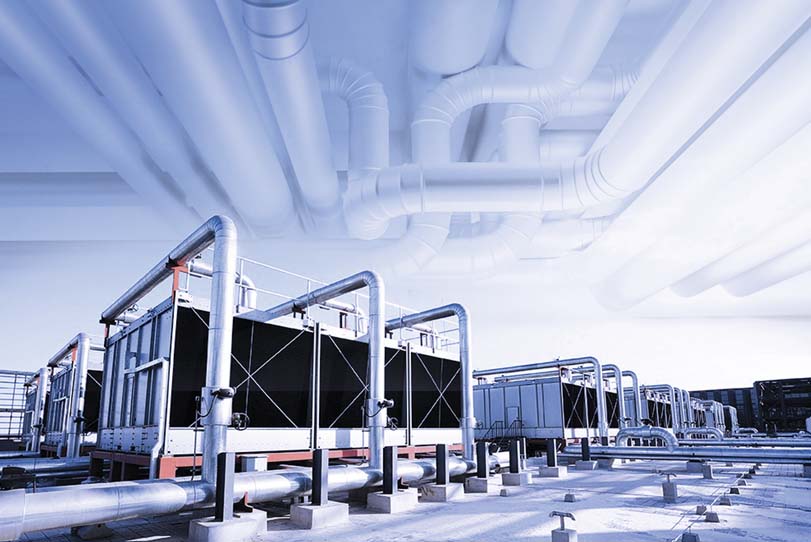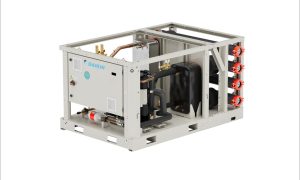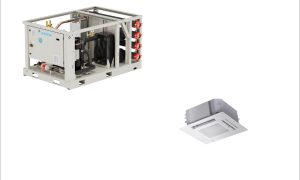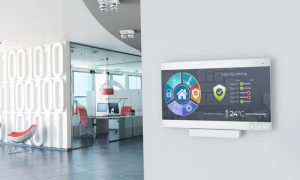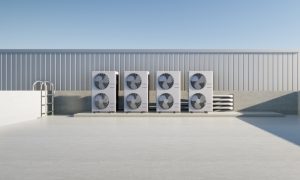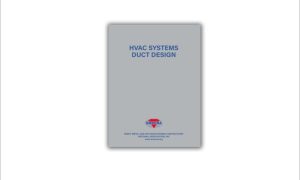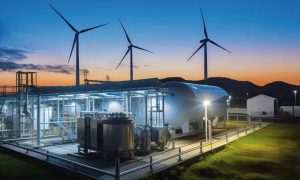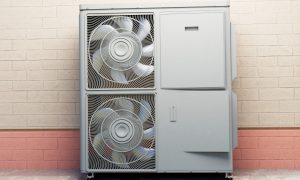Industry experts sharing efficient ideas for HVAC solutions, environment and IAQ, refrigerants and sustainability, also highlighting training aspects for technicians.
Higher efficiency equipment can reduce energy use by 50 percent for electric heating and cooling systems and 10 percent for gas furnace heating systems. The net zero emission by 2050 decarbonisation roadmap goal requires pursuing an emissions-reduction goal in a cost-effective manner and also creating opportunities for innovative retrofit equipment for HVAC energy efficiency.
The innovative efficiency solutions will lead to reductions in harmful greenhouse-gas emissions to negative the effects of climate change. Energy Star label, the government-backed symbol for appliances, requires less energy to run, which may yield annual energy bill savings of 10- 30 percent. Sealed ductworks direct conditioned air to where it is needed to reduce the loss.
Upto 20 percent of conditioned air is lost while moving through a duct system because of air leakage or holes in ducts. HVAC energy efficiency can be increased by trapping in heated or cooled air that it produces with insulation wraps. Certainly, maximising the life of an HVAC system can equal saving on bills. Hence, switching to energy-efficient household appliances is effective.
Thermal Control Business Update conducted an interactive session on Energy efficiency ideas for HVAC systems and solutions. The participants Vinod Maloo, Sales Manager-India, Nidec Global Appliance; Dipu Manuel, Product Group Head – VRFLiving Environment Division, Mitsubishi Electric India Pvt. Ltd.; Sandeep Vasant, Head sales and business development at Fläkt Group India and Achyut Kulkarni, Applied and Unitary Stream Leader for India and SAARC market, Trane Technologies discussed about energy efficiency, environment and IAQ, GWP refrigerants and sustainability ending the discussion on a positive note for implementation in HVACR industry.
Operational strategies to implement best practises
Revealing the perspective, Achyut said, I think it is very valid in the context which we keep on hearing from a lot of people when we speak about the environment. So, the predominant thing that we work particularly on the environment side from the HVAC perspective is the refrigerant, which is one of the most important aspects for any system. It could be a VRF. It could be chillers; it could be anything for that matter. So the refrigerant is something which is very important.
The transition has already begun. We have new trends coming in. We have new refrigerants coming in, particularly the one that we also heard about R290, and the propane gas that also performs part of the refrigerant. Yes, these are some of the factors which we need to really include in order to have the right and the balanced approach with respect to the environment. HFOs which have very, very low GWP may be less than one or something like that. The ODP is definitely zero. It is the life of a refrigerant molecule that is going to be there in the environment before it completely disintegrates.
So, particularly for HFC molecules, we have seen that life is somewhere around 13 years, 14 years, but the ones that have been coming up today are hardly 20 days and 25 days. So the impact is really minimised with reference to the refrigerant. Now, coming back to energy as I clearly explained, we have a lot of things which we can really work upon with high efficiency equipment.
The low pressure is one of the most important factors that actually drive the energy. The simple part is the pumping system because it runs on continuous operations unlike chillers. Particularly on the condenser side for water cooled chillers where it is not driven by a VFD as well, try to see what the best combination that works for you and you will be able to see a good amount of reduction in energy.
Suggested measures and norms to implement for cost efficient energy efficiency solutions
Sandeep talking about IAQ and sustainability and free cooling said, I think indoor air quality is the talk of the town with the Covid in the beginning and now the news of the new virus. I think free cooling is the best bet in terms of getting the fresh air, but of course, you have the dust and the contaminants. So, when we go for the measures; we go back to basics. We refer back to the ASHRAE norms and there is an ISHRAE Covid guideline, which clearly talks about what is the fresh air, what is the temperature humidity ASHRAE 52.2, 62.1 to 90.1 talks about the efficiency of the chiller, talks about filtration.
So, detailed documents are there on the website anyone could kind of download. These are the documents which talk specifically about HVAC. So one has to kind of refer back to these documents and see what are the filtration what are the best Air CFM per person in a building in commercial building and data centre that is a gain and loss for ASHRAE 2011-2015 and the technical committee of nine parts.
So various documents one needs to refer to while you design. It cannot be a design, which I do not recommend being a mechanical engineer. And I am sure all of us are engineers as well because we need to refer back.
Is mixed use of different GWP Refrigerants for commercial systems in malls and supermarkets the best idea for energy efficiency Emphasising about IAQ importance in life, Vinod elaborated saying, basically what happens like low GWP R290 has several advantages that we have seen in comparison to R404 and R134. Usually R290 is a perfect solution because our R290 has one decider disadvantage that is it’s highly inflammable. So, what happens when you cannot charge more than 150 grams in a narrow system! Now, recently there was an amendment to that limit of charge that has been increased to 500 grams. So, that is a 500 grams you can charge in a system. So, till that you can achieve a set of 2HP, 3HP of power or such sort of capacity.
HVAC system for large spaces for efficient operation
For a kind of HVAC system on a delegate query, Vinod replied, basically till 500 sq. ft., is very much, say our 1500 Watt compressor in R290 gives almost 30 percent more energy efficiency than R404 or R134. So, that is one advantage and it consumes very less refrigerant charge almost 30 percent less so, we highly recommend you can go for a condensing unit of R290 say 1500 watt and for, say 500 cubic feet room.
Innovative solutions for HVAC systems to achieve energy efficiency
Dipu rightly mentioned that freshers are needed for healthy environment as pandemic taught and talking about VRF system benefits and energy recovery ventilators Lossnay system;
He added further, the innovative system is a combination of various systems like one we are taking care of the air conditioning side then the system which will take over the fresh air side and both systems communicate with each other. So, a standalone independent system may not or will not achieve the efficiency which is required. So we need a system which will be communicating with the various other systems which are connected to that. So, overall a connected system can give him much more efficiency. That is the option of looking into having a better efficient system goes for a smarter system.
Digitalisation challenges for different OEMs and integrators and how to integrate smart systems in existing systems
Dipu said, most of the people or the market already have a lot of systems which are not smart or do not communicate with each other. What you said is the biggest pain point today for any end user for integrating various systems into one platform when communicating with each other. So till now there is no common protocol which is affordable for a user. I mean, on a larger scale it may be still possible, but in an affordable medium scale it is not there. So that may be a challenge, which has to be addressed.
What it is like when it will come nobody knows every OEM is protecting their protocols. And try to create an ecosystem with those protocols. But the client is looking for an option in which you can choose various OEMs to communicate with each other. So maybe we can look for a day where you can connect to any Wi-Fi through password. Maybe some kind of standardisation may happen in future where various sensors and various controllers will communicate with various devices which are actually delivering nothing. There is no timeline which we can put from an OEM point of view. From an industry person point of view, there is no visibility in sight as of now.
Can we expect some kind of standardisation coming up!
Achyut echoed the same line stating, I think it is the real pain point. But having said that, today, if you look at it from the chillers or the chillers plant room perspective, the demand is very clear the kind of protocols that are being used, or the communication protocols that have been used earlier, a lot of these protocols were proprietary protocols, where the OEM has to be there for any kind of communication or any kind of a retrofit. But now, it is not the case with BACnet and ASHRAE, BACnet protocols, these are all universally loved protocols wherein there is no OEM interference. So slowly, slowly, things are changing, and I am pretty sure that that is going to happen. But having said that, like, I would like to highlight a case here, wherein the OEMs themselves are doing a lot of activities, like say, for example, for train where we have supplied a chillers in Chennai, almost 10 years, 11 years back, and the performance was not up to mark and the customer came to us. And then we actually went ahead and did a lot of exercise on those chillers, we did a retrofit on the chillers in terms of not high investment. With a very medium investment, we brought the efficiency of that particular unit to an upgraded level. So I think a lot of those options are available today in the market wherein people have to approach the particular OEM and then give their consent on it. And definitely, yes, there are ways of improvement coming in going forward.
Sandeep replied, as the speaker rightly pointed out, there are controls which are specific to the OEM. In fact, we had a couple of projects where we had to control the different OEMs. But with BMS, control is a big subject and a niche subject to talk about that a lot of home automation companies can’t do. But I think the way forward we have a challenge in hand, towards the pains to come and in the future generation, I think that gap should be filled; I think we should have a kind of a common platform or a common fund controller, which can kind of talk to everyone.
I am sure all of it could be designed in the times to come. But yes, there are solutions, which we have seen, we have a couple of projects in India and outside India, where we have installed a third party controller and which is talking to different units, but again, not the right solution. Let us see, let us hope for the best.
Vinod said that we hardly touched on an aspect of maintenance today. So, when it comes to maintenance of the system, especially when most of the AMCs are going to unorganised sector and standalone contractors or standalone technicians are taking up the AMCs and usage of say substandard or low quality refrigerants again, you know, because customers, consumers may not be so well aware about it, they definitely consider the cost factor when it comes to the usage of refrigerants.
Refrigerants cost from HVAC efficiency view-point is a challenge
Vinod said, to change the mindset of a technician, you need a lot of us as an industry, we need to do a lot of things because what is happening you know, if some compressor is faulty then the technician goes and whatever is available is there he will replace. So, as an industry we need to train them to have good practises, how to evacuate this type of R134 and R404 and not into the environment directly.
And also if you see the government is coming with a lot and that is also forced from the government you know, to have a usage of R290. So, we need certain regular guidance like regularity push and also we need to develop a right ecosystem. So we are you know, technicians themselves will replace a R134 with R290 or with any logic GWP referencing compressor. I believe in the next two to three years at least in the deep freezer, that is the ice cream pieces segment you will find a lot of comparisons. So, you know all the systems are working towards changing over to R290. So, you will definitely see in going forward, we will have a lot of ecosystems, having a low GWP refrigerant usage.
Good design and design challenges in HVAC projects
Achyut stated, we see a lot of design challenges coming in. A lot of things happen, particularly when somebody is designing for a track system, because there is always an internal fight between the architect, he says he wants to have a better aesthetics. He says he doesn’t want to see the cooling tower on the top of it on the building. So a lot of things come into this. And it is actually a collaboration that is required in terms of the complete team that is getting that is working on a particular building.
Coming back to the prospect of the chillers, things have changed. A lot of new designs are being accepted. There are a lot of people. A lot of customer consultants do reach the OEMs well in advance just to understand what is happening, the new trends that have been launched, because it’s very difficult to follow each and every update on a specific portal unless and until they subscribe to thermal control business update.
So, it is very difficult for a lot of people to follow what exactly is going around. And the OEMs are in touch with a lot of people in order to bring a lot of good design changes. So we see good progress right now. And particularly on the design from the product perspective or on the refrigerant perspective, a good amount of advertisement has already been done. And the government also is pushing a lot of things. The India cooling action plan is one of the most key documents that has been made available to all the people which will definitely help people to understand more and the trends that are coming up in coming years.
Training or upgrading technicians outside Talking about smart operation, maintenance is essential. Vinod explained, typically, as a NIDEC global as an embraco compressor manufacturer, we do organise a lot of seminars, sort of, for technicians on the yearly rise because of the Covid only we could not organise for the last one and a half years. But every year we organise and we do impact training to the technician. We talk about R290. We talk about a lot of low GWP refrigerant and sort of so this kind of effort is going on. Surely I mean it will go on in future also.
Dipu from Mitsubishi Electric adds his point of view, we are tied up with one of the universities called Chitkara University. So, they are offering a B.Tech HVAC course, specifically for HVAC. So it’s a lateral intellect course and these students are trained only in air conditioning. So, they learn about VRF systems, chilled water systems, refrigeration systems, air fans, all these sites they lead.
So we are associated with them, we are the technology partner with them. We try to see if these students who come out in the market may join various companies or various organisations. So that is one of the regular activities which we are doing in association with the universities. Other than that regular trainings are arranged for technicians and other things at each state level premise, so that they can have hands-on training wherever it is possible. So as of now with Covid, online training is happening but the good part is if students are present personally, they will be learning many things. So we think that will go a long way. These students will come out, and one day they will be the industry leaders who will help to change the industry in future.
Sandeep said, I think it is very important because all of us deal with chiller VRV, which requires the involvement of refrigerant. And safety is something which is very important because engineers come from different backgrounds. So they don’t know what they’re handling. We do a lot of webinars like with the current situation where we keep on sharing our experience to the technician service engineer so that they know what they are handling, because safety is a priority given at FlaktGroup.
The way forward
I think definitely yes, the training is on because it’s very, very important. And if something fails, the company will be blamed a lot. Like, this product is not right. This is not right. That is not right. So yes, the technicians are trained properly, not just the technicians today, the customers are also getting trained. We get a lot of requests from a lot of people asking for professional training, professional maintenance, training, troubleshooting, and progress is on. A lot of things. are happening, concludes Achyut.
Cookie Consent
We use cookies to personalize your experience. By continuing to visit this website you agree to our Terms & Conditions, Privacy Policy and Cookie Policy.

